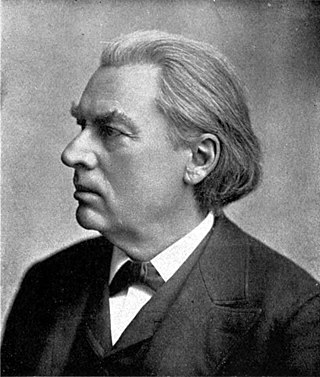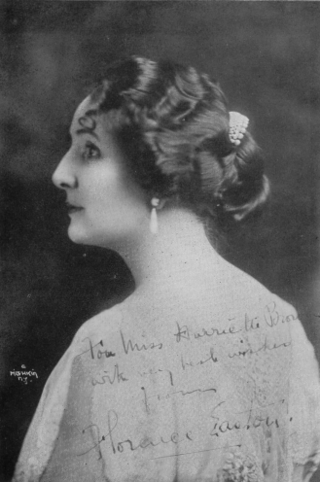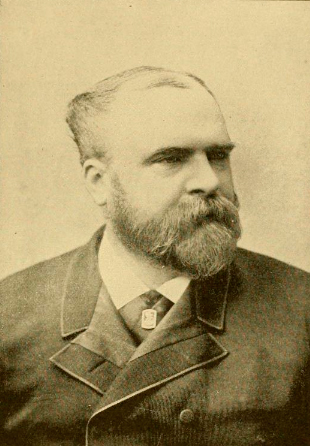Related Research Articles

Lauritz Melchior was a Danish-American opera singer. He was the preeminent Wagnerian heldentenor of the 1920s, 1930s, and 1940s and has come to be considered the quintessence of his voice type. Late in his career, Melchior appeared in movie musicals and on radio and television. He also made numerous recordings.

The New York Philharmonic, officially the Philharmonic-Symphony Society of New York, Inc., globally known as New York Philharmonic Orchestra (NYPO) or New York Philharmonic-Symphony Orchestra, is a symphony orchestra based in New York City. It is one of the leading American orchestras popularly referred to as the "Big Five". The Philharmonic's home is David Geffen Hall, located in New York's Lincoln Center for the Performing Arts.

Kirsten Malfrid Flagstad was a Norwegian opera singer, who was the outstanding Wagnerian soprano of her era. Her triumphant debut in New York on 2 February 1935 is one of the legends of opera. Giulio Gatti-Casazza, the longstanding General Manager of the Metropolitan Opera said, “I have given America two great gifts — Caruso and Flagstad.”

Artur Rodziński was a Polish-American conductor of orchestral music and opera. He began his career after World War I in Poland, where he was discovered by Leopold Stokowski, who invited him to be his assistant with the Philadelphia Orchestra. This engagement led to Rodziński becoming music director of the Los Angeles Philharmonic, Cleveland Orchestra, New York Philharmonic, and the Chicago Symphony Orchestra. He also prepared the NBC Symphony Orchestra for Arturo Toscanini before the Italian conductor's debut with them. A dispute in Chicago led to Rodziński's dismissal in 1948, whereupon he shifted his career to Europe, eventually settling in Italy, although continuing to maintain a home in Lake Placid, New York. In November 1958, beset by heart disease, he made his professional return to the United States for the first time in a decade, conducting acclaimed performances of Richard Wagner's Tristan und Isolde with the Lyric Opera of Chicago. Exhausted, he checked into Massachusetts General Hospital where he died 11 days later.

Hans Balatka was an American conductor and composer. His efforts contributed much to the great increase in popularity of European classical music in the United States during the late 19th century.

Theodore Thomas was a German-American violinist, conductor, and orchestrator. He is considered the first renowned American orchestral conductor and was the founder and first music director of the Chicago Symphony Orchestra (1891–1905).

Florence Easton was an English dramatic soprano of the early 20th century. She was one of the most versatile singers of all time, appearing in more than 100 roles, covering a wide range of styles and periods, from Mozart, Meyerbeer, Gounod, Verdi, Wagner, Puccini, Strauss, Schreker and Krenek. She sang virtually every Wagnerian soprano part, large and small, from Senta in Der Fliegende Holländer onwards, including Brünnhilde in Götterdämmerung.

Adolf Heinrich Anton Magnus Neuendorff, also known as Adolph Neuendorff, was a German-American composer, violinist, pianist and conductor, stage director, and theater manager.

Steinway Hall is the name of buildings housing concert halls, showrooms and sales departments for Steinway & Sons pianos. The first Steinway Hall was opened in 1866 in New York City. Today, Steinway Halls and Steinway-Häuser are located in cities such as New York City, London, Berlin, and Vienna.

Heinrich Zöllner was a German composer and conductor.

Max Bendix was an American concert violinist, conductor, and teacher. He was the first concertmaster of the Chicago Symphony Orchestra and was also the concertmaster of the Metropolitan Opera orchestra. Bendix wrote several works for orchestra and some incidental music as well as songs. In 1899, the Musical Courier called Bendix "the finest American violinist".
Theodore Edwin Steinway, of the Steinway piano family, was a member of the Collectors Club of New York and board of trustees of the Philatelic Foundation. He was awarded the first Lichtenstein Medal in 1952 for his efforts in the field of philately as well as his contributions to the growth and prestige of the Collectors Club.

Yoonjung "Yoonie" Han is a South Korean-born American classical pianist.

Karin Branzell was a Swedish operatic contralto, who had a prominent career at the Metropolitan Opera, New York, and in Europe. Her very wide range enabled her to sing both contralto roles and the occasional soprano role. She was particularly noted for her singing of the music of Richard Wagner, in roles such as Ortrud (Lohengrin), Venus (Tannhäuser), Erda, Brangäne, and Brunnhilde. She was considered on a par with Margarete Klose and Kerstin Thorborg as a Wagnerian contralto. Amneris (Aida), Dalila, Herodias (Salome), and Clytemnestra (Elektra) were among her other renowned roles.
Bruce Fowler is an American classical tenor who has had a major international performance career in operas and concerts since the early 1990s. He is particularly known for his appearances in bel canto operas. His first recording, as the tenor soloist for Handel's Messiah with Telarc, was nominated for a Grammy Award. He has also recorded Gioachino Rossini's Stabat Mater for Harmonia Mundi, Rossini's Armida for Sony, Jacques Ibert's Angelique for Fonit Cetra, Georg Philipp Telemann's Der Tag des Gerichts and Hugo Weisgall's Six Characters in Search of an Author on New World Records.

Shirlee Emmons was an American classical soprano, voice teacher, and author on vocal pedagogy. She began her career in the early 1940s as a concert soprano, eventually becoming one of the original singers in the Robert Shaw Chorale in 1948. She branched out into opera in the 1950s; performing mainly with regional companies in the United States. She achieved several honours as a performer, including winning the Marian Anderson Award in 1953 and an Obie Award in 1956.

Sebastian Bach Mills was a noted English pianist, composer and piano instructor who made his concert career in the United States and gave the first American performances of many important works.
The Germania Männerchor, later the Lincoln Club and the Germania Club, was a male choral cooperative society formed by German immigrants in Chicago. The group performed vocal music, music accompanied by an orchestra, and music for social dancing, later transforming to a private social club. It was one of the most popular singing groups in Chicago.
John Charles Pierce is an American operatic tenor and academic voice teacher. He made an international career based in Germany, and focused on Wagner roles such as Tannhäuser, Lohengrin and Tristan.
References
- 1 2 Saffle 1998, p. 10.
- 1 2 3 4 Saffle 1998, p. 96.
- ↑ Merian & Egg 1913, p. 774.
- ↑ "History". liederkranzny.org. Archived from the original on 1 October 2019. Retrieved 22 February 2020.
- ↑ "Guide to the Liederkranz Collection ca. 1847-1987". Archived from the original on 2009-11-20. Retrieved 2009-05-07.
- 1 2 3 4 5 "Scholarship Award Winner List 1987–2013" (PDF). liederkranzny.org. Retrieved 29 January 2020.
- ↑ Zahr, Oussama (April 2012). "OperaWatch". Opera News. Vol. 76, no. 10. Archived from the original on 21 April 2012. Retrieved 29 January 2020.
- ↑ "Chicago Bulletin - July 1, 2007 Chicago Classical Philharmonic Concert". chicagobulletin.com. 1 July 2007. Archived from the original on 26 August 2016. Retrieved 29 January 2020.
- ↑ "Liederkranz of the City of New York: History". Liederkranz of the City of New York. Retrieved 23 August 2022.
- ↑ "CBS Studios 53 to 56…Liederkrantz Hall, 111 East 58th Street". Eyes Of A Generation. Retrieved 23 August 2022.